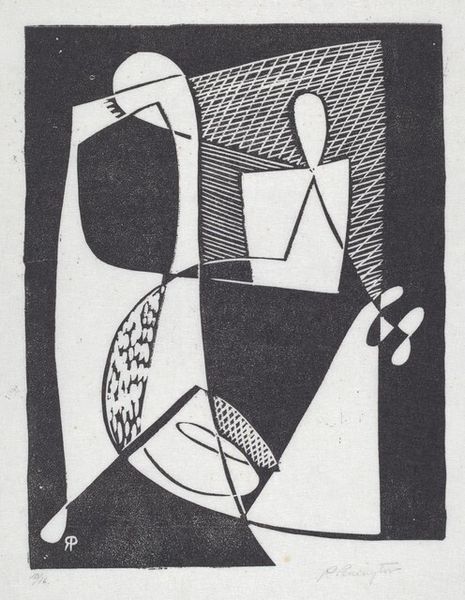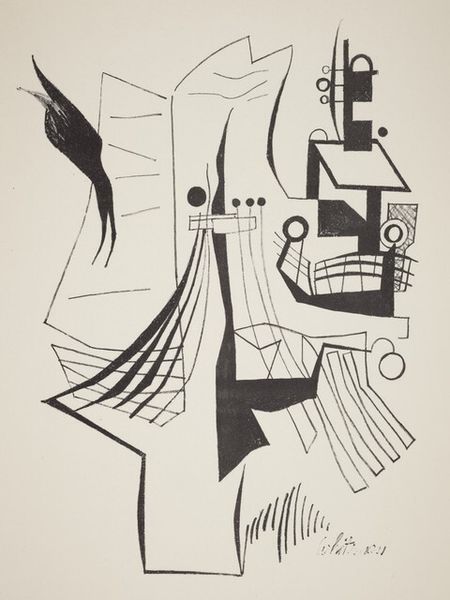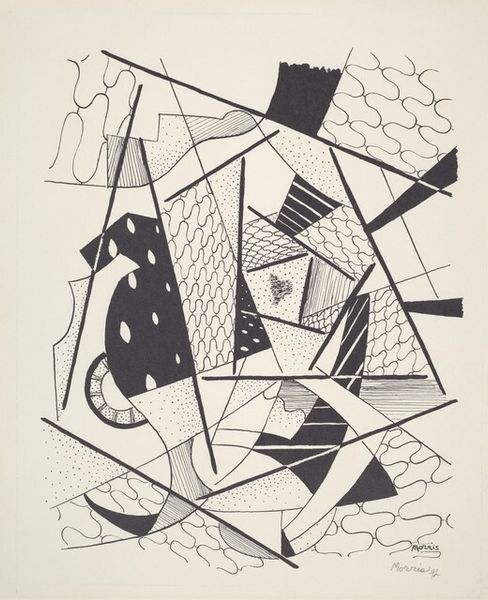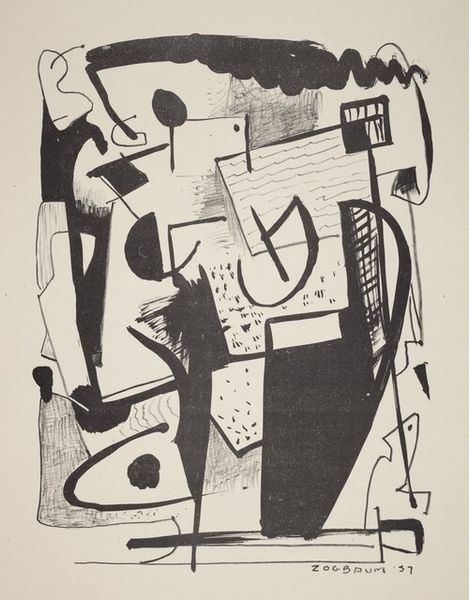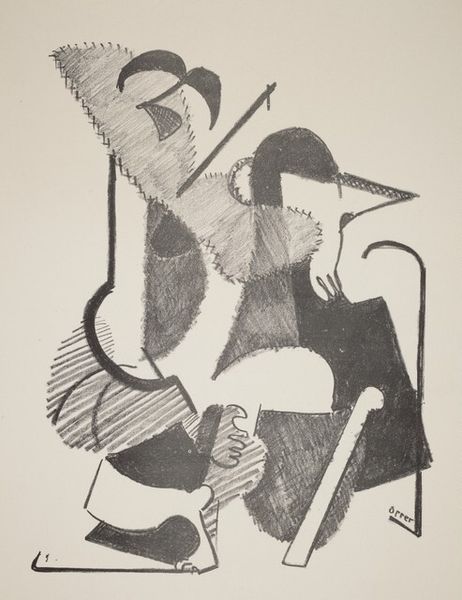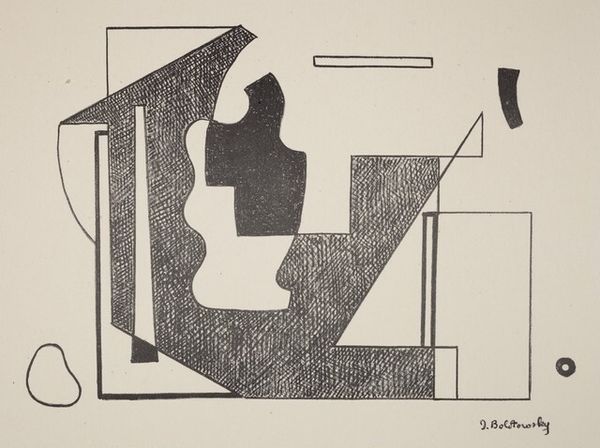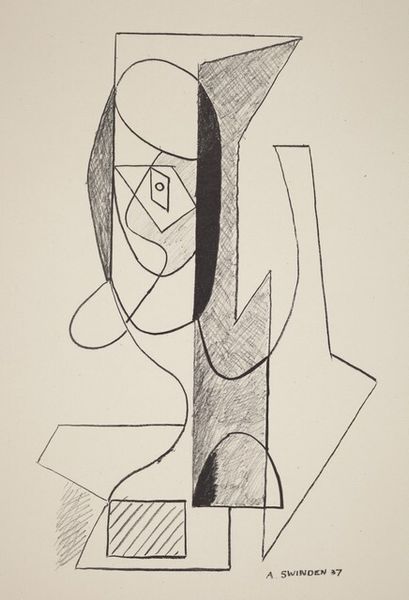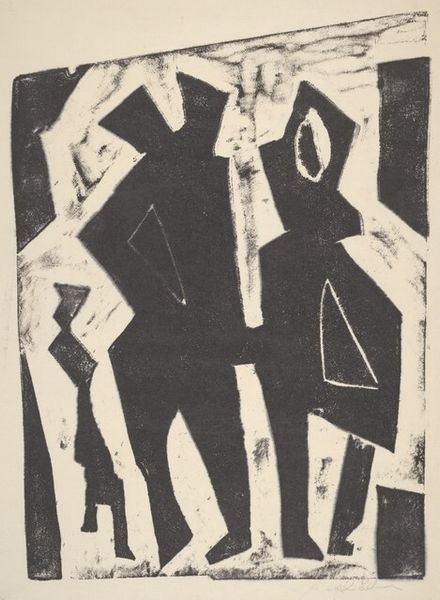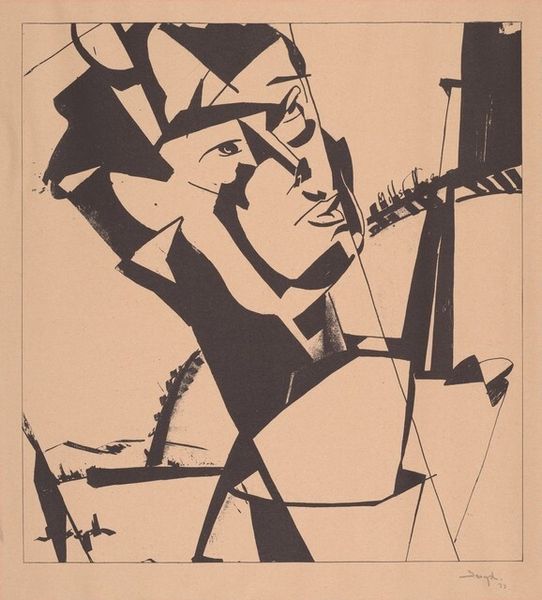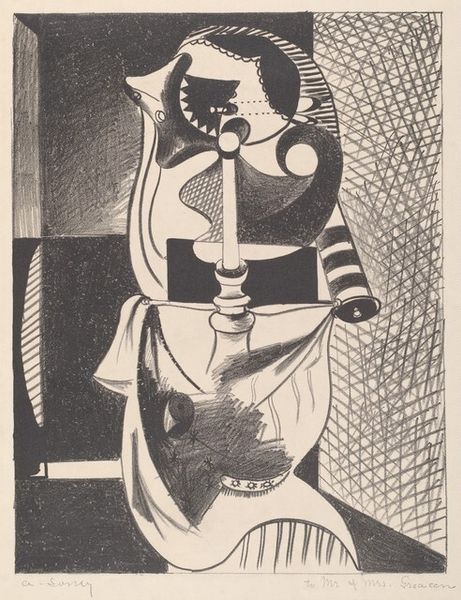
# print
#
constructivism
#
geometric
#
abstraction
Dimensions: Image:235 x 172mm Sheet:303 x 232mm
Copyright: National Gallery of Art: CC0 1.0
Curator: This print by Esphyr Slobodkina, titled "Untitled (Abstract)", was created in 1937 and embodies the principles of Constructivism. Editor: My immediate impression is of fragmented geometry creating a somewhat austere mood, the stark contrast between black and white generates visual interest and tension. Curator: Indeed. Slobodkina’s embrace of Constructivism arose from the radical, utopian ideas circulating within artistic communities of the early 20th century. These ideas saw geometric abstraction as a powerful tool for social change. We can see echoes of this in her later work with children's books, which applied basic shapes to educate. Editor: Precisely. The basic forms work as building blocks. See how she balances these severe geometric forms against softer patterns. That textured section to the upper left seems to function almost as counterpoint to the dominating monochrome areas. Curator: These varied surfaces – hatching, solid shapes – reveal an engagement with the social upheaval experienced by many female artists associated with the American Abstract Artists group during the Depression era. Women were often excluded from market recognition despite their central contributions. Slobodkina critiqued that marginalization through radical simplification. Editor: Agreed. Furthermore, the use of line, weight, texture— these components invite close inspection, leading us toward formal appreciation divorced from specific narrative context or topical urgency. The formal arrangement precedes ideological frameworks. Curator: But isn’t it reductive to view formal qualities without considering their relationship to material conditions? For Slobodkina, accessing exhibition spaces, distribution networks, these were tangible barriers and, as such, are inevitably encoded in the very materiality she employed. Editor: A fair point. Still, she clearly revels in the arrangement of form— it is the cornerstone here, a dialogue of volumes occupying positive and negative spaces that surpasses pure utility. Curator: Ultimately, the genius lies in integrating these factors— formal precision coupled with social and political consciousness resulting in compelling dialogue within minimalist parameters. Editor: Indeed. Seeing these sharp angles and structured blocks now I’m feeling that original starkness fade and warm. There’s something quite inviting here.
Comments
No comments
Be the first to comment and join the conversation on the ultimate creative platform.

